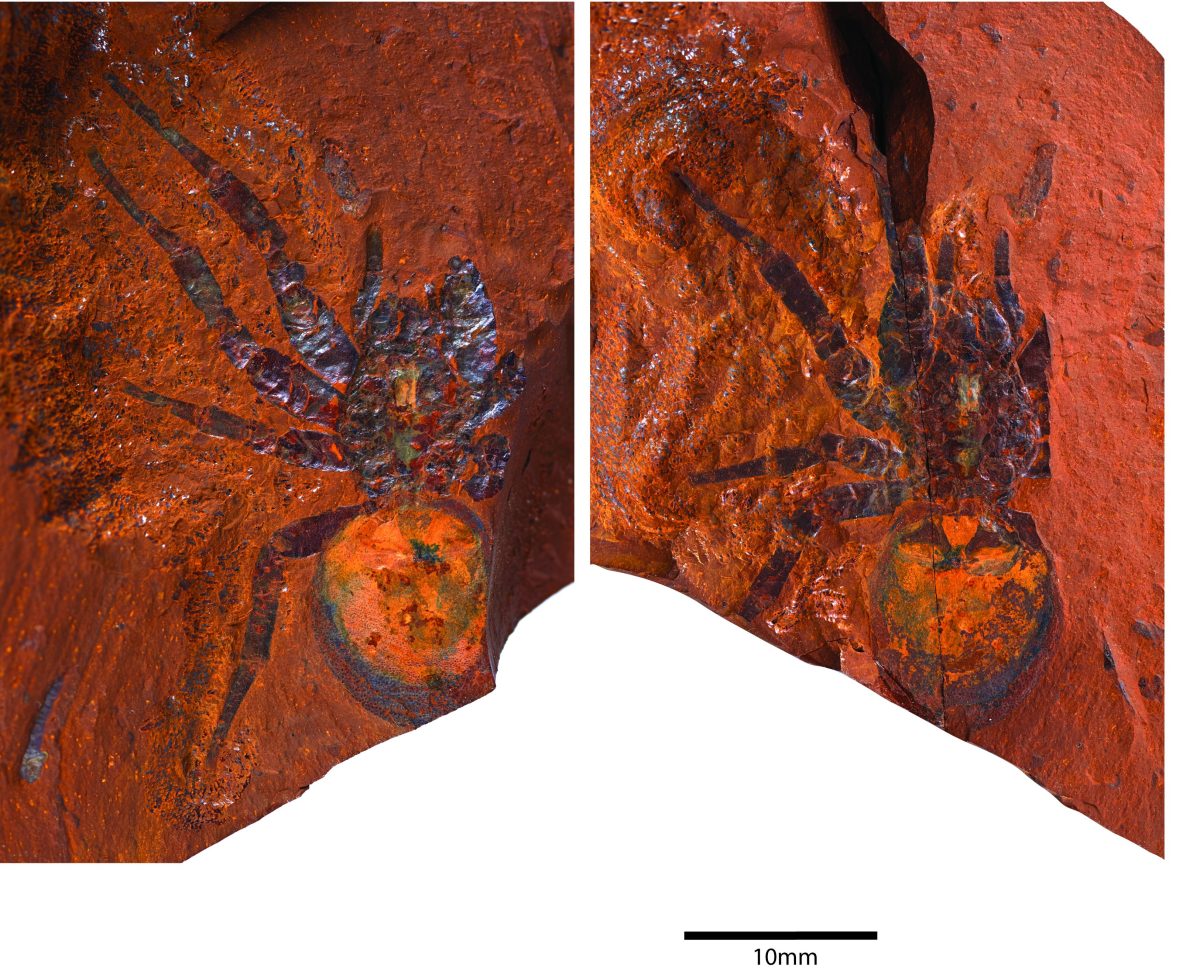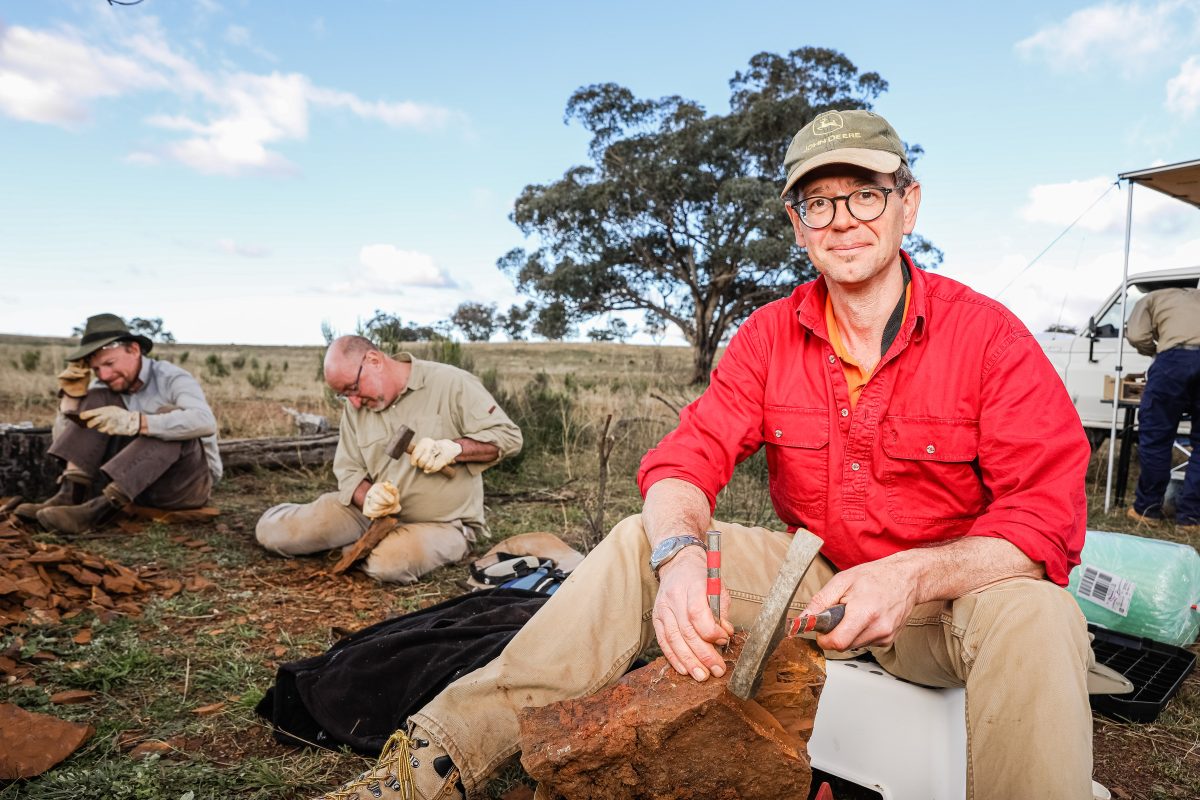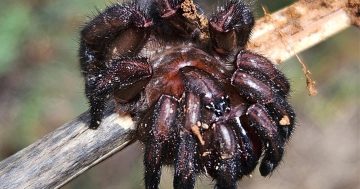
Believed to be the world’s oldest spider fossil, the Megamonodontium mccluskyi, a giant relative of the trapdoor spider, has been named after the Canberra scientist who found it. Photo: Australian Museum.
A large fossilised spider, believed to be up to 16 million years old and the first of its kind to be uncovered, has been named after the Canberra geospatial scientist who found it, Dr Simon McLusky.
Now known as Megamonodontium mccluskyi, it is the first spider fossil of the Barychelidae family to be found. It is similar to the living genus Monodontium – a brushed trapdoor spider – but is five times larger.
The team of Australian scientists involved in the discovery, led by Australian Museum and University of NSW palaeontologist Dr Matthew McCurry, also included University of Canberra Associate Professor Michael Frese and, according to an Australian Museum spokesperson, they have a farmer, who is a “bit of a science nerd”, in western NSW, to thank for pointing them in the right direction.
The spokesperson said the farmer at McGraths Flat, near Gulgong, was working on his property, moving rocks with an excavator when he spotted something unusual.
“He got off the excavator to have a closer look and saw what he thought looked like a fossil,” the spokesperson said.
“Then he called us to tell of his find, and we discovered that he was sitting on a treasure trove of fossils.”
Turns out the fossil found was that of a leaf, but it led the scientists to dig deeper, where they uncovered the spider fossil.
Dr McCurry said few such fossil spiders had been found in Australia, which made this discovery significant.
Dr McCurry said that only four spider fossils had been found throughout the continent, making it difficult for scientists to understand their evolutionary history. “That is why this discovery is so significant. It reveals new information about the extinction of spiders and fills a gap in our understanding of the past.
“The closest living relative of this fossil now lives in wet forests in Singapore through to Papua New Guinea. This suggests that the group once occupied similar environments in mainland Australia but have subsequently gone extinct as Australia became more arid.”
The scientists reported that not only was it the largest fossilised spider to be found in Australia, but it was also the first fossil of the family Barychelidae to be found in the world.
They said although about 300 species of brush-footed trapdoor spiders are alive today, few became fossils, probably because they spent so much time inside burrows and were not in the right environment to be fossilised.

University of Canberra Associate Professor Michael Frese, who used stacking microphotography to scan the fossils, said the McGraths Flat find showed a remarkable level of detailed preservation. Photo: Australian Museum.
“Scanning electron microscopy allowed us to study minute details of the claws and setae on the spider’s pedipalps, legs and the main body,” he said.
“Setae are hair-like structures that can have a range of functions. They can sense chemicals and vibrations, defend the spider against attackers and even make sounds.”
The fossil is now housed in the Australian Museum’s palaeontology collection and is available online for researchers to study.
The scientific team’s findings on this new spider genus have now been published in the 2023 Zoological Journal of Linnean Society.













